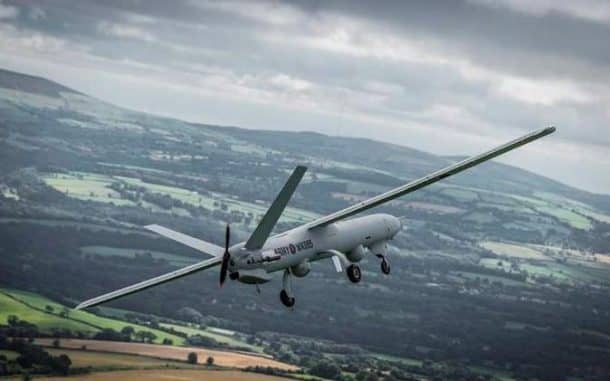The Watchkeeper is a remote-control aircraft held by the British Airforce, and it just ran into an accident that threatens to keep it on ground for quite a while. This multi-million dollar Army exploration drone has been suspended from service after it nose-dived into a Welsh runway during a landing.
The report of the incident states that before the drone crashed into the runway, it was overtaken by manual controls ran by the civilian crew. This was done in order to make the drone land faster due to bad weather fast approaching the Aberporth Airport on October 16.
An accident report into the 2014 crash conducted by the Military Aviation Authority stated that the aircraft was around 10 to 15ft off the runway when it nose-dived rapidly and impacted the ground, which caused considerable damage to the fuselage. It was also reported that the undercarriage was also severely damaged and eventually collapsed because the drone continued to slide along the runway after the impact.
Thankfully no one was killed or injured in the accident, but the drone was damaged to such an extent that it had to be suspended from any further service. This means that apart from a brief stint in Afghanistan, the aircraft will not enter full service until next year.
The Ministry of Defence, UK ordered 54 of these drones in 2005, which cost them about £847m; and were justified as tools to provide surveillance and reconnaissance for troops.

The Watchkeepers are capable of collecting and sending high definition images 24/7 from a height of up to 16,000ft.
The Watchkeeper was being run by the crew at the Aberporth Airport when it crashed. Director General of the Defence Safety Authority, Air Marshal Dick Garwood blamed the “landing logic” for the crash, and termed the software “not fit for purpose”.
He claims that just before the landing aircraft’s software got confused due to the heavy gusts of wind. So it presumably thought of it as touching the ground and self-initiated landing sequence, causing the aircraft’s v-shaped tail to pitch the nose down into the ground.
The MoD and Thales UK have accepted the findings of the Service Inquiry and now look to make changes to maximise flight safety. They were also quick to report that this was one of just two landing accidents in over 1,000 flights since Watchkeeper trials started in 2008.
Have anything else to add to this article? Let us know in the comments’ section below!


